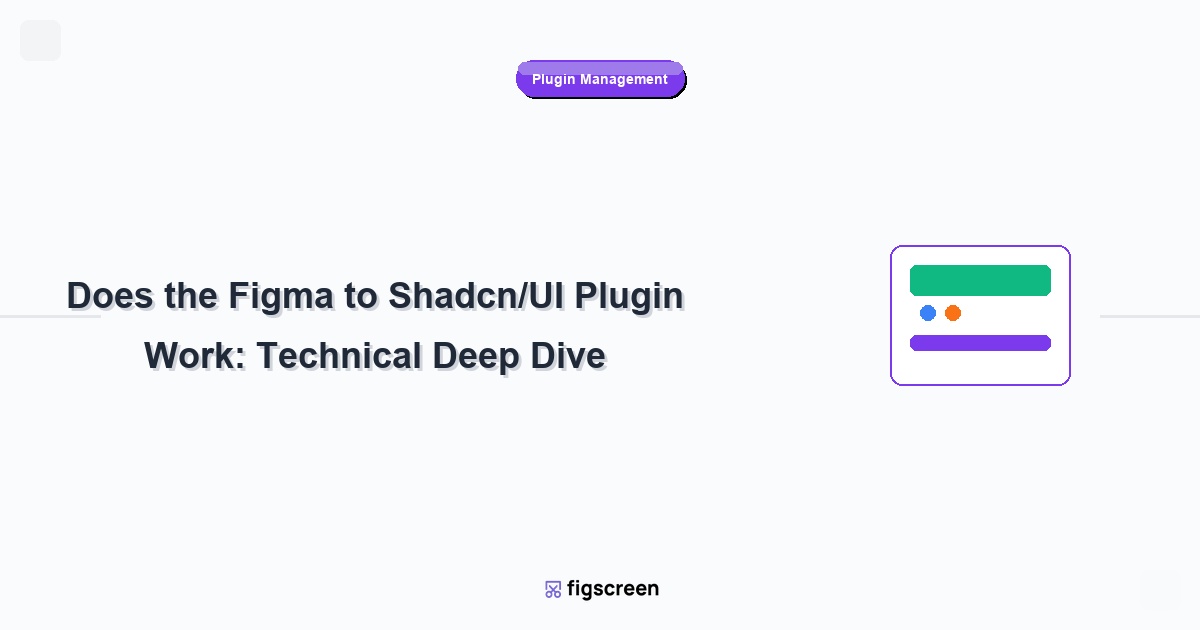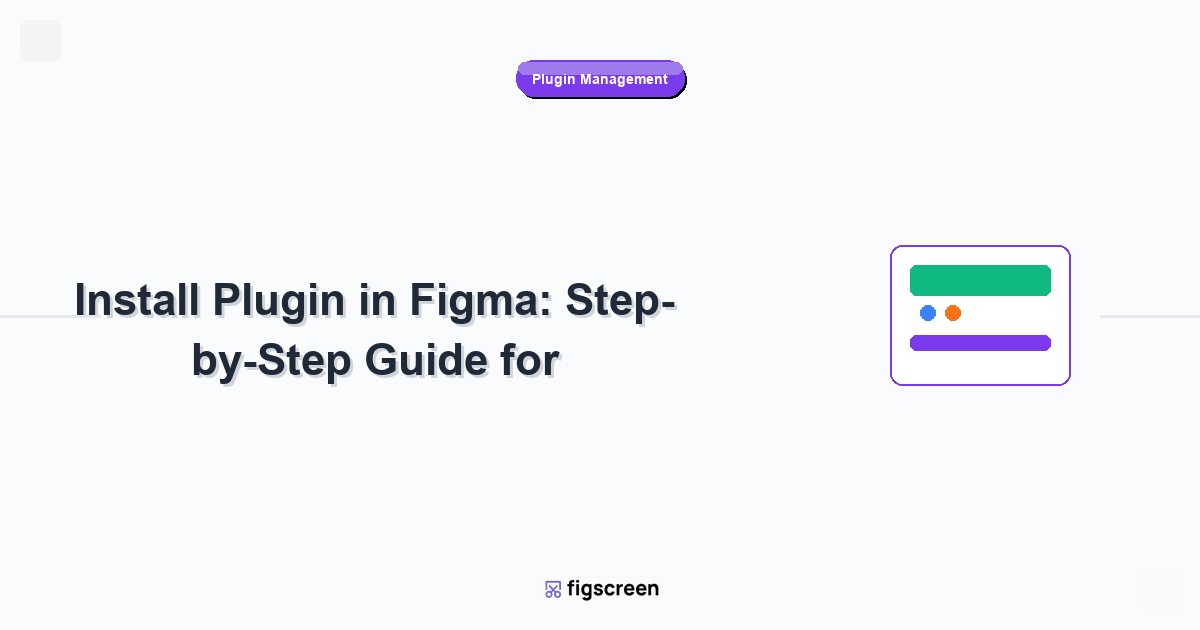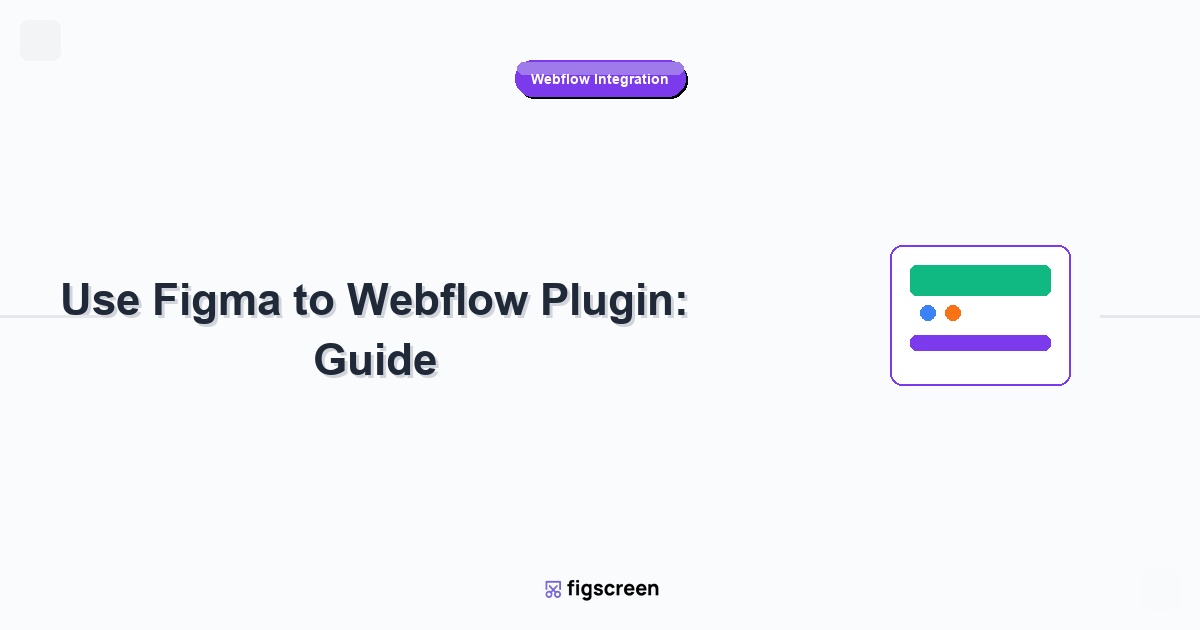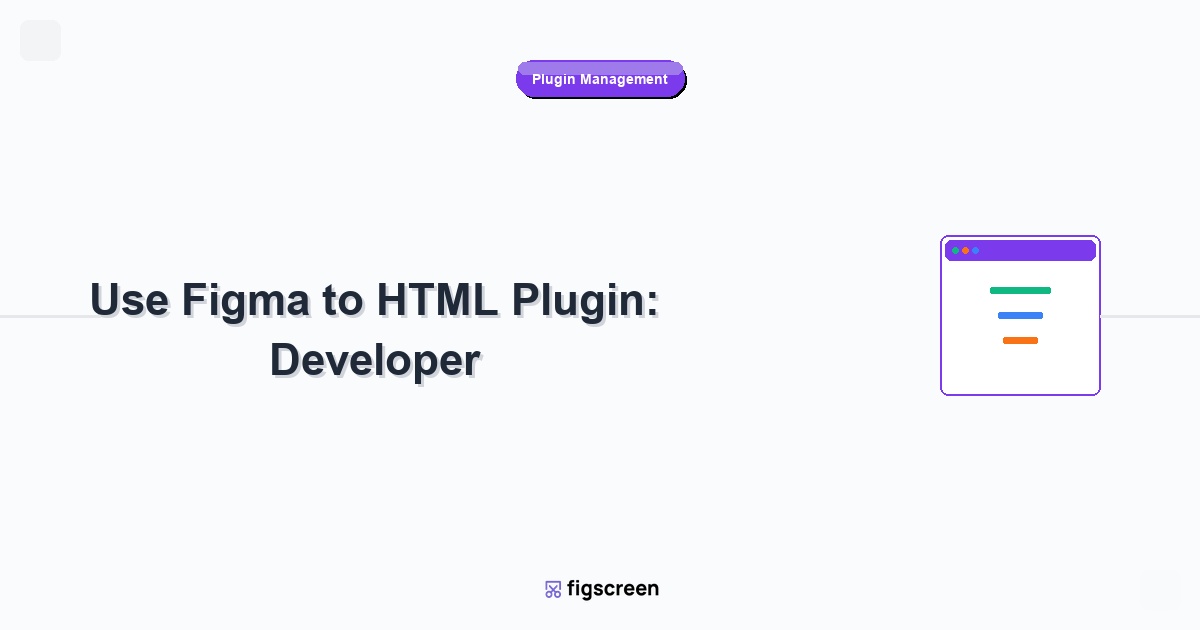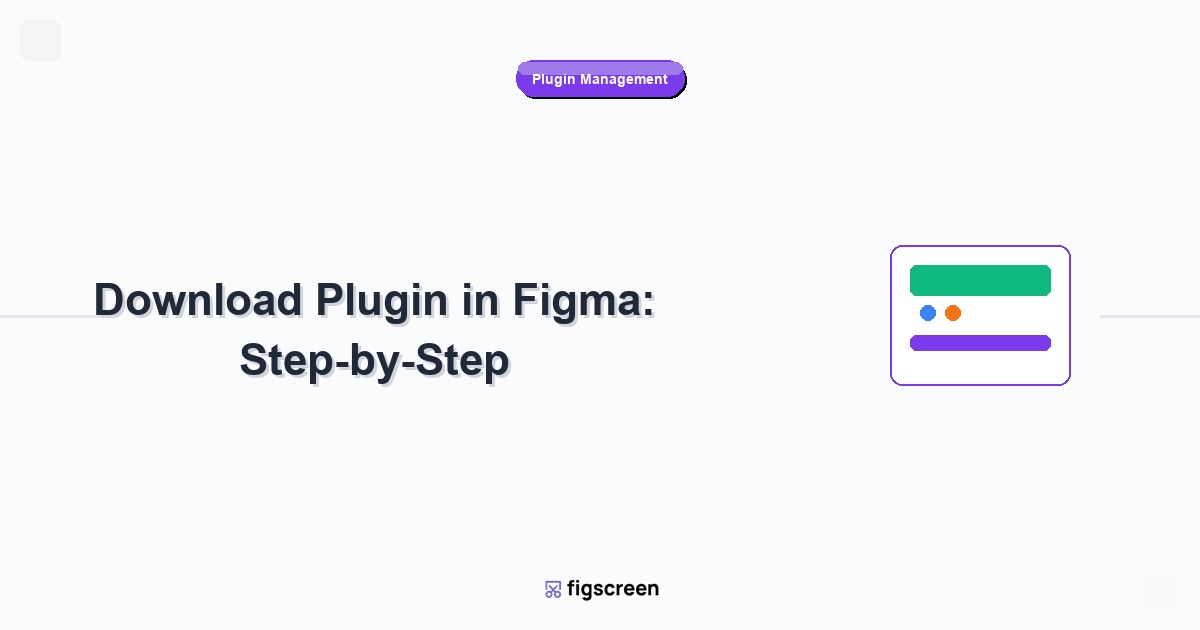Icons are fundamental elements in modern interface design, and using icon plugins effectively in Figma can dramatically speed up your design workflow while ensuring consistency and professional quality. Whether you’re working on mobile apps, websites, or marketing materials, understanding how to properly use icon plugins will help you create more polished and user-friendly designs efficiently.
Understanding Icon Plugins in Figma
Types of Icon Plugins Available
Different icon plugins serve various design needs:
- Comprehensive Libraries – Iconify, Material Icons with thousands of icons
- Specialized Collections – Industry-specific or style-focused icon sets
- Brand Icon Libraries – Social media, company logos, and brand symbols
- Custom Icon Managers – Tools for organizing and managing your own icons
- Icon Generators – Plugins that create custom icons automatically
Benefits of Using Icon Plugins
Icon plugins provide significant advantages over manual icon management:
- Instant Access – Browse thousands of icons without leaving Figma
- Consistent Quality – Professional-grade icons with uniform styling
- Time Efficiency – No need to search external websites or create icons from scratch
- Vector Quality – Scalable icons that maintain crisp edges at any size
- Regular Updates – Access to new icons as libraries expand
- Team Consistency – Everyone uses the same high-quality icon sources
Getting Started with Icon Plugins
Choosing the Right Icon Plugin
Select icon plugins based on your specific needs:
- Project Requirements – Match icon style to project aesthetic
- Icon Volume – Consider how many icons you need access to
- Customization Needs – Some plugins offer better customization options
- Team Usage – Ensure chosen plugins work well for team collaboration
- Performance Factors – Consider plugin speed and reliability
Basic Icon Plugin Workflow
Master the fundamental workflow for using icon plugins:
- Open Your Design – Start with your Figma design file
- Launch Icon Plugin – Access from Actions > Plugins menu
- Search for Icons – Use keywords to find appropriate icons
- Preview Options – Review different icon styles and variations
- Insert Icons – Add selected icons to your design
- Customize Appearance – Adjust size, color, and styling as needed
Effective Icon Search Strategies
Keyword Search Techniques
Find the right icons quickly with effective search strategies:
- Functional Keywords – Search by what the icon represents (save, delete, edit)
- Visual Descriptors – Use appearance-based terms (arrow, circle, star)
- Context Words – Include usage context (navigation, social, e-commerce)
- Synonym Variations – Try alternative terms if initial search fails
- Style Modifiers – Add style terms (outline, filled, minimal)
Browsing by Categories
Explore icon collections systematically:
- Interface Elements – Navigation, buttons, and UI components
- Communication – Phone, email, chat, and messaging icons
- Social Media – Platform logos and social interaction icons
- E-commerce – Shopping, payment, and retail-related icons
- Technology – Devices, software, and tech-related symbols
Advanced Search Filters
Use plugin filters to narrow down icon selections:
- Style Filters – Outline, filled, duotone, or multicolor
- Size Categories – Icons optimized for different display sizes
- Icon Sets – Browse specific designer or brand collections
- License Types – Filter by usage rights and licensing terms
- Recent Additions – Find newly added icons to collections
Icon Customization Techniques
Basic Icon Modifications
Customize icons to match your design requirements:
- Resize Icons – Scale to appropriate sizes for your interface
- Change Colors – Apply brand colors or theme-appropriate hues
- Adjust Stroke Width – Modify line thickness for outline icons
- Apply Effects – Add shadows, glows, or other visual effects
- Combine Elements – Create custom icons by combining multiple icons
Maintaining Icon Consistency
Ensure visual consistency across your icon usage:
- Consistent Sizing – Use standardized icon sizes throughout your design
- Unified Style – Stick to one icon style (outline or filled) per project
- Color Harmony – Use consistent color schemes for icons
- Stroke Uniformity – Maintain consistent stroke widths across outline icons
- Spacing Standards – Apply consistent padding and margins around icons
Advanced Customization
Create sophisticated icon modifications:
- Vector Editing – Modify icon paths and shapes directly
- Component Creation – Turn customized icons into reusable components
- State Variations – Create active, inactive, and hover states
- Animation Preparation – Set up icons for micro-interactions
- Accessibility Enhancements – Ensure icons meet accessibility standards
Icon Organization and Management
Creating Icon Libraries
Build organized collections of frequently used icons:
- Identify Common Icons – Note icons you use repeatedly across projects
- Create Icon Frames – Set up organized frames for different icon categories
- Standardize Sizing – Ensure all library icons follow consistent sizing rules
- Apply Naming Conventions – Use clear, searchable names for icon components
- Document Usage – Add descriptions explaining when to use each icon
Component System Integration
Integrate icons into your design system:
- Icon Components – Create master components for each icon
- Size Variants – Develop multiple size options for each icon
- Color Variants – Create versions in different brand colors
- State Components – Build components for different interactive states
- Documentation – Provide clear guidelines for icon usage
Team Icon Standards
Establish consistent icon usage across your team:
- Approved Icon Sets – Define which icon collections the team should use
- Style Guidelines – Document icon styling and modification rules
- Quality Standards – Set minimum requirements for icon quality and appropriateness
- Review Processes – Implement approval workflows for new icon additions
Icon Usage in Different Design Contexts
User Interface Design
Apply icons effectively in UI design contexts:
- Navigation Icons – Clear, recognizable symbols for menu items
- Action Buttons – Icons that clearly communicate button functions
- Status Indicators – Visual representations of system states
- Form Elements – Icons that enhance form usability and clarity
- Information Architecture – Icons that help organize and categorize content
Mobile App Design
Optimize icon usage for mobile interfaces:
- Touch Target Size – Ensure icons meet minimum touch target requirements
- Platform Conventions – Follow iOS and Android icon guidelines
- Screen Density – Provide appropriate icon sizes for different screen densities
- Contextual Clarity – Choose icons that remain clear at small sizes
Web Design Applications
Implement icons effectively in web design:
- Loading Performance – Choose optimized icon formats for fast loading
- Responsive Behavior – Ensure icons scale appropriately across devices
- Accessibility Compliance – Include proper alt text and ARIA labels
- Cross-Browser Compatibility – Test icon appearance across different browsers
Working with Specific Icon Plugins
Iconify Plugin Usage
Maximize the powerful Iconify plugin features:
- Massive Library Access – Browse over 100,000 icons from multiple collections
- Advanced Search – Use sophisticated filtering and search capabilities
- Collection Browsing – Explore icons by specific designer or brand collections
- Quick Insertion – Rapidly add icons with one-click insertion
- SVG Export – Access clean SVG code for development handoff
Material Icons Integration
Effectively use Google’s Material Design icons:
- Design System Alignment – Perfect integration with Material Design principles
- Multiple Styles – Choose from outlined, filled, rounded, and sharp variants
- Consistent Sizing – Icons designed for 24dp grid system
- Regular Updates – Access to Google’s continuously updated icon library
Feather Icons Workflow
Leverage the clean, minimal Feather icon set:
- Minimal Aesthetic – Perfect for clean, modern interface designs
- Consistent Style – Uniform stroke width and design principles
- Developer Friendly – Popular choice for web development projects
- Easy Customization – Simple structure makes modification straightforward
Best Practices for Icon Usage
Icon Selection Criteria
Choose icons that enhance user experience:
- Universal Recognition – Select icons with widely understood meanings
- Cultural Sensitivity – Consider how icons might be interpreted across cultures
- Context Appropriateness – Ensure icons fit the overall design aesthetic
- Scalability – Choose icons that remain clear at different sizes
- Accessibility – Select icons that are distinguishable for users with visual impairments
Technical Optimization
Optimize icons for performance and quality:
- Vector Format – Use SVG format for crisp rendering at all sizes
- File Size – Optimize icon files for fast loading
- Naming Conventions – Use descriptive, consistent naming for easy management
- Export Settings – Configure appropriate export settings for development
Troubleshooting Icon Plugin Issues
Common Plugin Problems
Resolve typical icon plugin issues:
- Slow Loading – Check internet connection and plugin cache
- Search Results Not Loading – Try different keywords or restart the plugin
- Icons Not Inserting – Ensure you have an active Figma canvas selected
- Poor Icon Quality – Check if you’re using the correct icon size/format
- Plugin Crashes – Restart Figma and clear plugin cache
Performance Optimization
Maintain smooth performance while using icon plugins:
- Close Unused Plugins – Don’t keep multiple icon plugins open simultaneously
- Limit Concurrent Searches – Avoid running multiple searches at once
- Clear Plugin Cache – Periodically clear temporary plugin data
- Update Plugins – Keep icon plugins updated to latest versions
Advanced Icon Workflows
Icon Animation Preparation
Prepare icons for animation and micro-interactions:
- Component Structure – Organize icon elements for easy animation
- State Variations – Create different states for animated transitions
- Path Optimization – Simplify icon paths for smooth animations
- Timing Considerations – Design icons that work well with planned animations
Icon Accessibility Enhancement
Ensure icons are accessible to all users:
- Alternative Text – Provide descriptive alt text for screen readers
- Color Independence – Ensure icon meaning doesn’t rely solely on color
- Size Standards – Meet minimum size requirements for touch targets
- Contrast Requirements – Ensure sufficient contrast with background colors
Future of Icon Design
Emerging Icon Trends
Stay current with evolving icon design trends:
- Adaptive Icons – Icons that change based on context or user preferences
- 3D Icon Elements – Subtle dimensional effects in icon design
- Animated Icons – Movement and micro-interactions in icon design
- Personalized Icons – Icons that adapt to individual user preferences
Technology Integration
Prepare for technological advances in icon usage:
- AI-Generated Icons – Machine learning tools for custom icon creation
- Voice Interface Icons – Visual representations for voice-first interfaces
- AR/VR Icons – Icon design for immersive environments
- Dynamic Icons – Icons that change based on real-time data
Conclusion
Mastering icon plugin usage in Figma significantly enhances your design workflow efficiency and output quality. By understanding how to effectively search, select, customize, and manage icons, you can create more polished and user-friendly designs while maintaining consistency across projects.
Remember that good icon usage is not just about finding the right symbols—it’s about understanding how icons contribute to user experience, accessibility, and overall design quality. Use icon plugins as powerful tools to streamline your workflow, but always consider the broader context of how icons serve your users and support your design goals.
Complete Your Visual Design Toolkit
While icon plugins provide perfect symbols for your interfaces, Figscreen captures real-world visual inspiration from websites and applications. Together, they create a comprehensive toolkit for visual design excellence.
